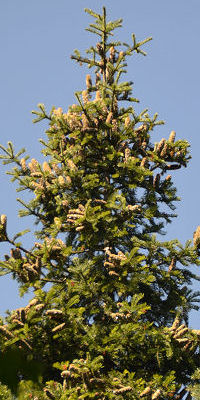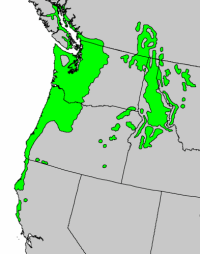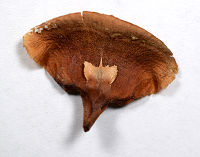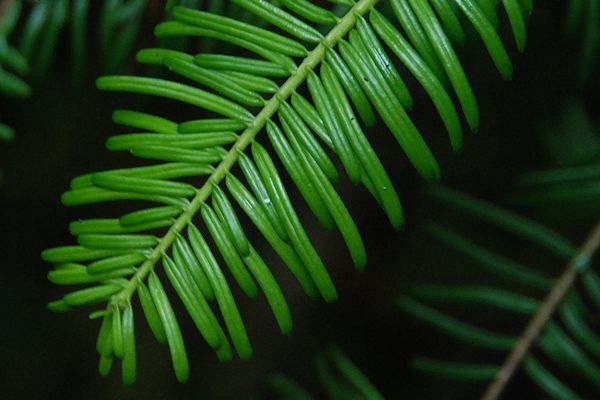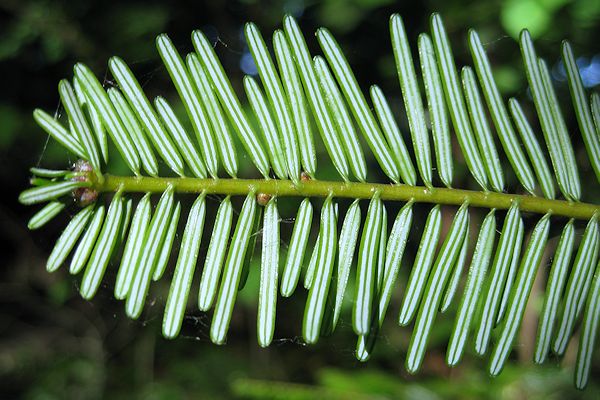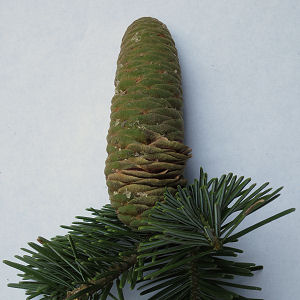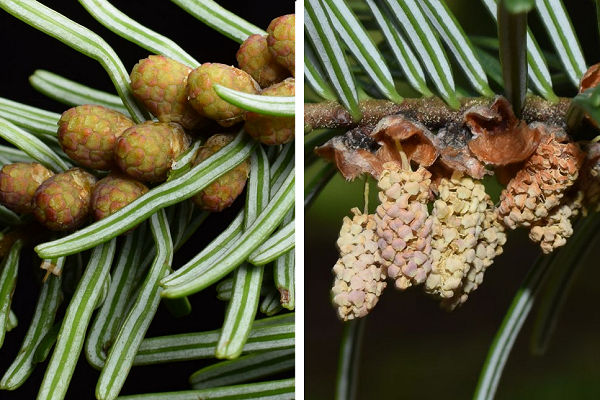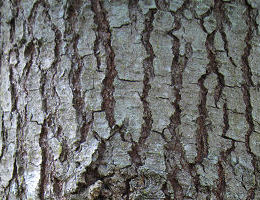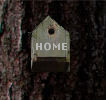 |
Northwest Conifers |
AboutAll ConifersConifersLow-elevationHigh-elevationOthersEast SideSouthwestNon-natives——————Conifer ConesIndexMore Info |
Grand Fir –
Abies
grandis
|
|
|
Grand fir is a large tree that can grow to 250 feet (75 meters). It's conical form and dark green foliage contribute to it's beauty. Needles: Grand fir has needles that spread out on opposite sides of the twig in flattened rows, although when growing in direct sunlight or east of the Cascades crest they sometimes crowd to the top of the twig. The individual needles are flat with a grove along the top. Their color is a dark, shiny green on top with two white lines underneath. Cones: The cones sit upright on the branches near the treetop. Like other firs, grand fir cones fall apart at maturity, dispersing the winged seeds and leaving a cone core spike on the branch. You won't find grand fir cones on the ground, but you might see some of these scales. Note that the short bracts are hidden inside the cone.
Bark: The gray bark is smooth with blisters on small branches, breaking into flat ridges and narrow furrows on large trees. Where it grows: Grand fir grows at lower elevations throughout most of western Oregon and Washington, but also grows at elevations up to 5000 feet (1500 meters). It also grows in northern Idaho. It is the only true fir you will find growing below 1500 feet (450 meters). It is a moderately shade-tolerant tree that thrives in moist areas. Grand fir is not as abundant as western hemlock in its range, but you can usually find it growing here and there among the other conifers, often under larger Douglas fir. Grand fir east of the Cascades crest are sometimes described as a different variety from those on the west side. The west side trees grow faster than those on the east side. The needles on east side trees tend to crowd the top of the twig even when growing in the shade. Grand fir is more common in the mountains of northern Idaho, occasionally growing in pure stands. Similar tree: Pacific silver fir grows at mid to higher elevations of the Cascades. The needles point forward and upward rather than lying flat like grand fir. Unfortunately, grand fir needles often also point forward and upward when growing in the sun, or even in the shade on the east side of the Cascades. To add to this confusion, Pacific silver fir needles often lie flat when growing in the shade. On mature trees, you can distinguish the trees by looking at the bark. Unlike the grand fir's furrowed bark, Pacific silver fir bark breaks into large scaly plates on large trees. Hybrids: In the southern Cascades and Siskiyous, grand fir hybridizes with white fir. The hybrids take on varying characteristics of each species, which makes identification a challenge. Uses: Like other true firs, grand fir is used to make plywood and paper. Lumber sold as hemlock may be mixed with fir. Christmas tree lots often feature grand fir. Its dark-green needles and its strong fir-like fragrance make it a popular choice. Its stately appearance also makes it a popular choice for landscaping. Names: Grandis means "large." Other common names: Lowland fir, white fir.
|
Twig growing in the sun
Pollen cones before and after release
|
© 2011 Ken Denniston

